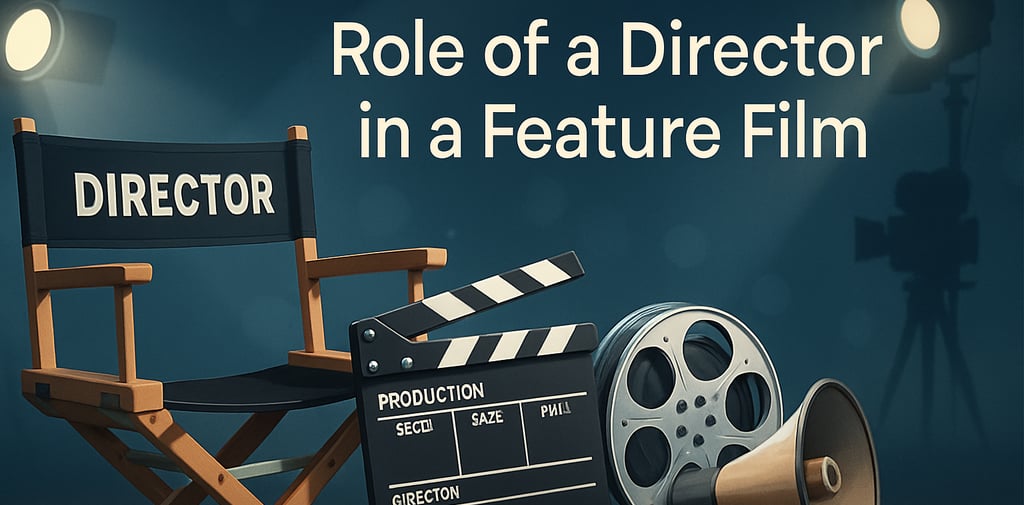The Role of a Director in Making a Successful Feature Film
Behind every great film is a director who transforms a written script into a cinematic experience.
7/22/20252 min read


🎬 The Role of a Director in Making a Successful Feature Film
Behind every great film is a director who transforms a written script into a cinematic experience. The director is not just a creative force—they are the glue that binds narrative, performance, and visual storytelling into a unified vision.
Whether working with a large studio or a micro-budget crew, the director’s decisions shape every frame, every emotion, and ultimately, the audience’s experience. In this article, we explore the multifaceted role of the director and how their leadership, vision, and collaborative skillset are essential in turning a concept into a compelling, successful feature film.
The director is the creative and emotional compass of a feature film. They unify vision, performance, tone, and storytelling, making critical decisions from development through post-production. Here's how:
🎯 1. Defining the Vision
Interprets the screenplay into a cohesive cinematic vision.
Develops the tone, visual style, pace, and thematic depth of the film.
Collaborates on lookbooks, mood boards, and storyboards to align the team.
🧠 2. Storytelling Leadership
Breaks down the script into emotional beats and visual language.
Shapes the narrative arc scene-by-scene with intentional blocking and framing.
Ensures every choice—camera, sound, set, costume—serves the story.
🎭 3. Directing Performances
Guides actors through emotional nuance, character motivation, and scene objectives.
Builds trust and creates a space for authentic, risk-taking performances.
Adjusts performance styles to fit the tone and rhythm of the film.
🛠️ 4. Collaborating with Key Departments
Works closely with the cinematographer (DP), production designer, costume designer, editor, and composer.
Maintains artistic continuity across visuals, sound, and mood.
Communicates clearly and decisively, especially under time or budget constraints.
📅 5. Managing the Set
Oversees the day-to-day shoot: blocking, camera setups, and timing.
Solves real-time problems while protecting the film’s integrity.
Keeps the crew motivated, focused, and aligned with the vision.
🎞️ 6. Shaping the Final Cut
Works with the editor to craft pacing, rhythm, and performance refinement.
Makes key decisions in sound design, music, color grading, and VFX.
Balances emotional impact with narrative clarity.
🧩 7. Final Responsibility
Owns the final creative outcome.
Champions the film through festivals, press, and sometimes distribution.
A successful director not only executes a vision, but inspires others to elevate it.
A director’s role goes far beyond calling “action” and “cut.” They are the visionary, storyteller, and emotional architect of the film. Their ability to lead teams, shape performances, and uphold a coherent vision through every production phase is what often separates forgettable films from unforgettable ones. Whether you’re an aspiring director or a producer looking to understand your creative partner better, recognizing the depth and responsibility of this role is key. A director’s imprint is lasting—and when done well, their leadership elevates not just the story, but everyone involved in telling it.
